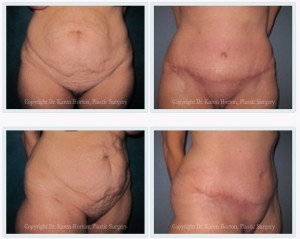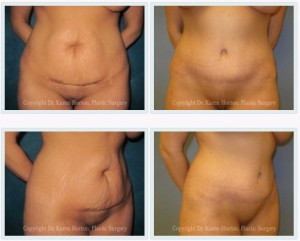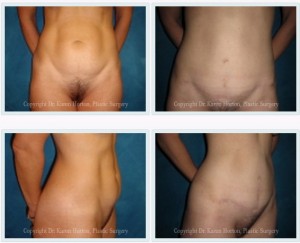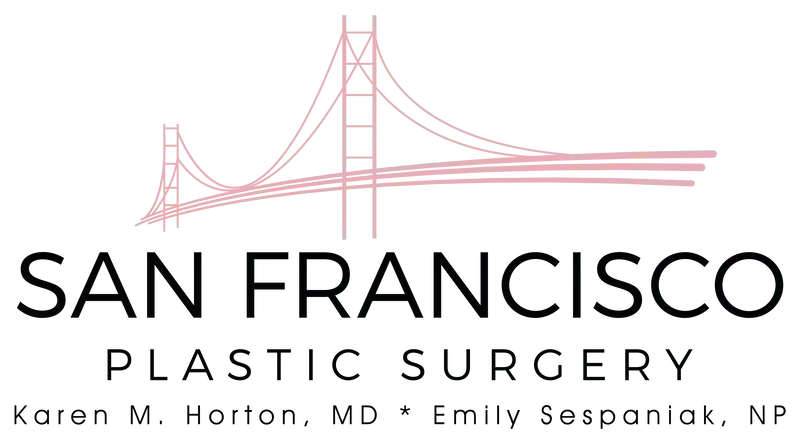“Mini-abdominoplasty” – a “mini” job?
Patients often contact me seeking a “mini-abdominoplasty”. They want correction of the separation of their abdominal muscles after pregnancy – known as rectus diastasis – but are afraid of a long scar and a long recovery. Some surgeons might try to “sell” the idea of a lesser, more gentle and less invasive surgery to encourage their patients to sign up and schedule their procedure.
I take the opposite approach: rather than minimizing the details of surgery and its recovery, I choose to EDUCATE my patients and to suggest the best procedure for each patient, based on their anatomy, their goals for surgery and their available downtime. This includes preparing for surgery (well ahead of their procedure) and the postoperative instructions and expected recovery and realistic downtime.
This is called “informed consent” and it is a vital part of the surgical consultation. Without full understanding of the diagnosis, the available options to treat this condition, their respective risks and benefits, alternatives, expected outcomes and potential complications of surgery, how can you expect to be prepared?

“Rectus diastasis” describes permanent separation of the abdominal muscles from one another in the midline after pregnancy. From the outside, this is seen as a bulging abdomen that often still looks pregnant, even years later!
In the case of an abdominoplasty (tummy tuck), the diagnoses that cause a woman to seek correction are:
- rectus diastasis in most cases (separation of the rectus abdominis muscles from one another in the midline due to pregnancy)
- crepey, loose skin (often nicknamed “mummy tummy” or “twin skin” by my patients)
- stretch marks in the lower abdominal area
- excess, stubborn fat deposits in the abdominal or flank area, pubic region or surrounding regions

Before and after abdominoplasty – significant crepe-like skin and stretch marks are removed, muscles are tightened together in the midline and tummy skin is re-draped downward with a low bikini line scar
A tummy tuck corrects each of these conditions in a single operation that usually takes 2-3 hours and requires an overnight stay in the hospital, with a 6 week recovery period where exercise is not permitted.
The incision is made as LOW as possible in the bikini line, usually to replace a C-section scar if it exists, and it is kept as short as possible so that the scar is hidden within a bikini bottom (YES, a bikini! – what I encourage all my Mommy Makeover patients to feel confident wearing after their surgery). To learn more about tummy tuck details, visit the abdominoplasty section of my website.

Before and after abdominoplasty – visible separation of rectus abdominis muscles with an outward curvature to their contour and loose, baggy skin are removed and the result is a tighter, more contoured abdomen
What exactly is a MINI-abdominoplasty?
The term “mini” is often used as a marketing term to make surgery sound more friendly. In my practice, I try to avoid this lingo, as the appropriate abdominoplasty procedure will address the ENTIRE area of rectus muscle separation, and the scar will be as SHORT as possible, depending on your specific anatomy. We may indeed call this a “short scar” procedure, but “mini” usually refers to a mini-job, if you know what I’m saying! We do not skimp on the work done.

Before and after abdominoplasty – obvious rectus diastasis is corrected from top to bottom, with a low, short scar. While some might call this a “mini” abdominoplasty, the full job was completed!
In my practice, the goals for each of my tummy tuck patients are the following, regardless of whether we call the tummy tuck a “full”, “mini”, “extended” or any other descriptive term for their abdominoplasty:
- Removal of all excess skin and stretch marks from the lower abdomen – usually from the pubic hair below to the belly button above
- Complete repair of rectus diastasis in its anatomic zone – “corseting” or rectus muscle repair usually occurs from the xiphoid process under the sternum, downward to the pubic bone. The extent of this is not usually fully known until it is visualized under direct vision during surgery
- Re-draping of the abdominal wall skin downward to create a firmer contour over the tightened muscular wall underneath
- Umbilicoplasty, which involves recontouring the belly button to a more youthful “innie” version that looks fit and trim, like the rest of the tummy
- Lastly, suctioning of excess fat in the abdominal, flanks and pubic region to achieve the very best abdominal contour
I view the entire abdominal wall as a region, and I do not focus in only on the scar, the bulge, or the belly button. Correction of the tummy should consider ALL the aspects mentioned above, in my opinion, for the very best results! If we can do that with a shorter scar, we will! And then you can call it a “mini”. But I will do the best job for each patient, and we can name their procedure anything we want to make it sound fabulous – like the “hot mama-I look fabulous-I am so excited to wear my new bikini” makeover!
To learn more about abdominoplasty read our blog posts about tummy tucks and Mommy Makeovers. To schedule a consultation, complete our online request form or call 415-923-3067 today!

